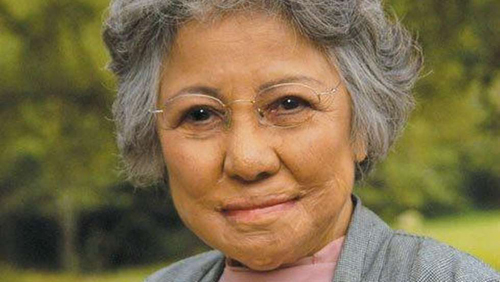 Thirteen-year-old Shigeko Sasamori remarked on the beauty of the sky as she walked down the street in Hiroshima, Japan, with her good friend and schoolmate. The girls looked up in childish wonderment as they saw an airplane pass overhead. A peculiar object fell from the aircraft and, within seconds, a raucous, resounding “boom” blasted around them and Sasamori was knocked to the ground.
Thirteen-year-old Shigeko Sasamori remarked on the beauty of the sky as she walked down the street in Hiroshima, Japan, with her good friend and schoolmate. The girls looked up in childish wonderment as they saw an airplane pass overhead. A peculiar object fell from the aircraft and, within seconds, a raucous, resounding “boom” blasted around them and Sasamori was knocked to the ground.
The world went black.
August 6, 1945: an epoch in the history of the world—the day the United States detonated an atomic bomb on Hiroshima. A day that forever changed the world’s views on nuclear weaponry, war and peace. A day that so many people forget.
Shigeko Sasamori woke from the darkness to a city in ruin and to those in her community—dead or injured. Less than a mile from the explosion’s hypocenter—a radius with an almost-100-percent mortality rate—Sasamori miraculously survived. Her face, chest, arms, hands and neck suffered severe trauma and more than 25 percent of her body was burned. Despite these injuries, she persevered.
Sasamori talks about her firsthand experience and peacemaking at 5:30 p.m. Thursday, Nov. 14, in the College’s Gibble Auditorium, as part of Elizabethtown College’s Peace and Remembrance Series. Dr. Nobuaki Takahashi, assistant professor of Japanese and coordinator of the Series said, “The bombing is becoming less and less significant. It’s important to keep reminding people about war being bad and the importance of peace.”
Sasamori’s story took a positive turn in 1955, when Norman Cousins, American journalist and world peace activist, traveled to Hiroshima to bring two dozen victims of the atomic bomb attack to America for reconstructive surgery. These wounded were later referred to as the “Hiroshima Maidens.” Cousins raised money to pay for their surgeries through the readership of his publication, “Saturday Review.” One of the women receiving treatment and multiple surgeries, over the course of two years, was Sasamori. When her treatments were completed, Cousins offered to help her continue her education to become a nurse in America—a career she pursued for more than 30 years.
All I knew was what I had learned from school, but one lady [Sasamori], who was actually there and who described it to me, changed my whole attitude towards the event.”
Since then, Sasamori has dedicated her life to promoting peace throughout the world. In 1980, she was a spokesperson for Hiroshima City Peace Movement. She became CEO and spokesperson, in 2004, for Hiroshima and Nagasaki Peace Projects; its’ mission: “to protect the international community against the hazards of nuclear weapons through lectures and other forms of education.”
Two years ago, professor Takahashi heard Sasamori speak; he was utterly moved by her testimony. “All I knew was what I had learned from school, but one lady [Sasamori], who was actually there and who described it to me, changed my whole attitude towards the event.”
He hopes Elizabethtown College’s Peace and Remembrance Series does that for others. “It’s not about the past; it’s about the future,” said Takahashi. The Series, on campus Nov. 11 through 14, promotes the importance of peace in the context of the Hiroshima bombing. The Series includes a poster exhibit in the College’s High Library, Nov. 11 through Nov. 17, and a showing of the HBO documentary “White Light, Black Smoke” at 5 p.m. Wednesday, Nov. 13, in Gibble Auditorium.
The Elizabethtown College Peace and Remembrance Series concludes with Sasamori’s testimony on Thursday, Nov. 14. “She is so positive, even with this unfortunate event,” said Takahashi, “She loves people, all people of the world. Everyone to her is like family.”
Later, he said, with an endearing chuckle, “I call her my grandma.”

